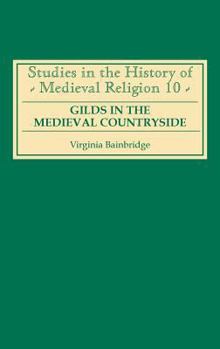Gilds in the Medieval Countryside: Social and Religious Change in Cambridgeshire C.1350-1558
(Part of the Studies in the History of Medieval Religion Series)
This is a study of religious gilds in Cambridgeshire, from their apparent proliferation in the mid-fourteenth century to their dissolution under Edward VI, and their failure to return during the Catholic revival of Mary I's reign. Gilds, or fraternities, reflected the social hierarchies of their communities; local gentry acted as patrons, and below them an oligarchy of wealthier tenants exercised control through manorial, gild and parish office. Fraternities benefited their members by fostering mutual charity in life and commemoration after death; they made substantial contributions to the parish through the organisation of religious devotions and the maintenance of additional priests, and in social and economic terms through the ownership of land, animals and other corporate amenities such as gild halls.
Dr Bainbridge examines lay responses to changing devotional and doctrinal patterns; the inter-relation of the religious and the secular; and the differing role of gilds in both rural and urban parishes, in the densely settled shire of Cambridge and the sparsely populated fens of the Isle of Ely. Her study is based on the returns to the 1388-9 survey of religious gilds and surviving gild records, and a sample of about two thousand wills provides the context; manorial records, poll-tax returns and letters patent give further information on the communities in which they flourished
Dr Bainbridge examines lay responses to changing devotional and doctrinal patterns; the inter-relation of the religious and the secular; and the differing role of gilds in both rural and urban parishes, in the densely settled shire of Cambridge and the sparsely populated fens of the Isle of Ely. Her study is based on the returns to the 1388-9 survey of religious gilds and surviving gild records, and a sample of about two thousand wills provides the context; manorial records, poll-tax returns and letters patent give further information on the communities in which they flourished
Format:Hardcover
Language:English
ISBN:0851156177
ISBN13:9780851156170
Release Date:November 1996
Publisher:Boydell Press
Length:189 Pages
Weight:1.00 lbs.
Dimensions:0.5" x 6.1" x 9.2"
Customer Reviews
0 rating





